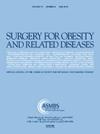袖式胃切除术与GLP-1激动剂相比可改善终末期肾病合并肥胖患者的肾移植:决策分析
IF 3.8
3区 医学
Q1 SURGERY
引用次数: 0
摘要
背景:肥胖可能是获得肾移植的障碍,因为不同移植中心的体重指数(BMI)标准存在显著差异。有效的减肥策略对于改善终末期肾病(ESRD)肥胖人群获得肾移植至关重要。目的:评估该人群在饮食和运动、袖式胃切除术(SG)和胰高血糖素样肽-1受体激动剂(GLP-1 RAs)后进行肾移植的可能性。地点:美国大学医院。方法:建立决策分析马尔可夫状态转移模型,模拟BMI达到2以下不适合肾移植的ESRD合并肥胖患者的预后。基础病例患者定义为45岁,干预前BMI为45 kg/m2的患者。模型输入来自文献综述。结果:SG导致14%的患者在10年时接受肾移植,而GLP-1 RA组的这一比例为2.5%,假设饮食、运动或药物100%依从,分别为2和37.5 kg/m2。结论:与饮食、运动和GLP-1 RAs相比,SG改善了肾移植的可及性。随着新的减肥药的不断开发和普及,这些疗法的风险和益处应该与目前可用的减肥疗法进行比较,以优化这一人群的肥胖管理。本文章由计算机程序翻译,如有差异,请以英文原文为准。
Sleeve gastrectomy versus GLP-1 agonist to improve kidney transplant access in end-stage renal disease patients with obesity: a decision analysis
Background
Obesity can be a barrier to accessing kidney transplantation as there is significant variability in body mass index (BMI) criteria among transplant centers. Effective weight loss strategies are crucial for improving access to kidney transplantation in the end-stage renal disease (ESRD) population with obesity.
Objectives
To estimate access to kidney transplantation following diet and exercise, sleeve gastrectomy (SG), and glucagon-like peptide-1 receptor agonists (GLP-1 RAs) in this population.
Setting
University hospital, United States.
Methods
A decision-analytic Markov state transition model was created to simulate the outcomes of ESRD patients with obesity who were ineligible for kidney transplantation unless they achieved a BMI <35 kg/m2. Base case patients were defined as a 45-year-old patient with a preintervention BMI of 45 kg/m2. Model inputs were obtained from literature review.
Results
SG resulted in 14% of patients receiving kidney transplantation at 10 years, compared to 2.5% of patients in the GLP-1 RA group, and <1% of patients with diet and exercise. Upon sensitivity analysis, SG demonstrated a survival advantage over both diet and exercise and GLP-1 RAs above a BMI of 34.4 kg/m2 and 37.5 kg/m2, respectively, assuming 100% compliance with diet and exercise or medication.
Conclusions
SG improves access to kidney transplantation compared to diet and exercise and GLP-1 RAs. As new obesity medications continue to be developed and increase in popularity, the risks and benefits of these therapies should be compared to currently available weight loss therapies in an effort to optimize obesity management in this population.
求助全文
通过发布文献求助,成功后即可免费获取论文全文。
去求助
来源期刊
CiteScore
6.70
自引率
12.90%
发文量
570
审稿时长
56 days
期刊介绍:
Surgery for Obesity and Related Diseases (SOARD), The Official Journal of the American Society for Metabolic and Bariatric Surgery (ASMBS) and the Brazilian Society for Bariatric Surgery, is an international journal devoted to the publication of peer-reviewed manuscripts of the highest quality with objective data regarding techniques for the treatment of severe obesity. Articles document the effects of surgically induced weight loss on obesity physiological, psychiatric and social co-morbidities.

 求助内容:
求助内容: 应助结果提醒方式:
应助结果提醒方式:


